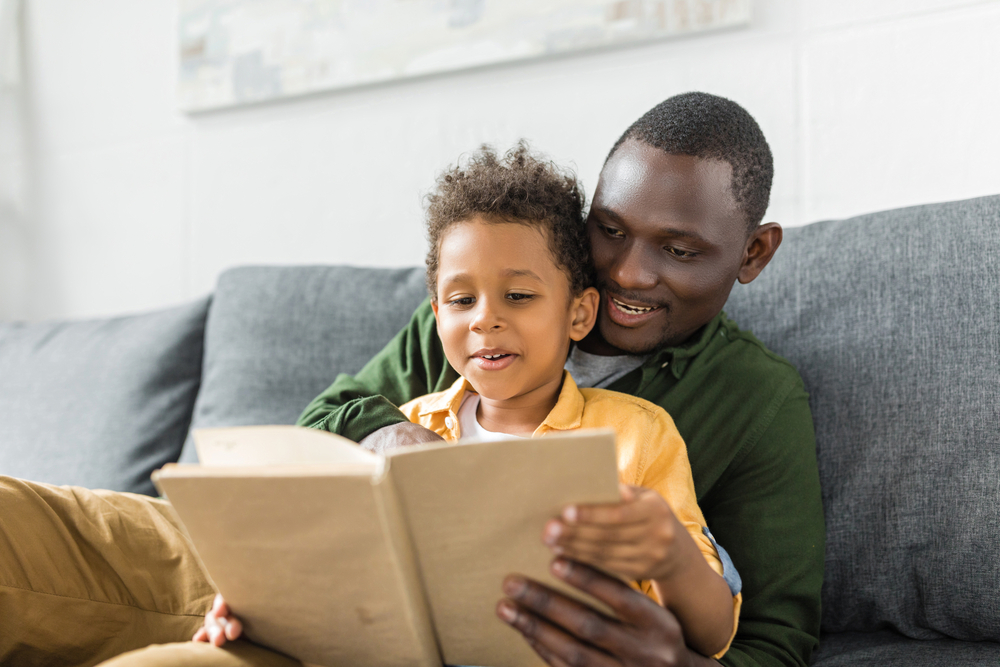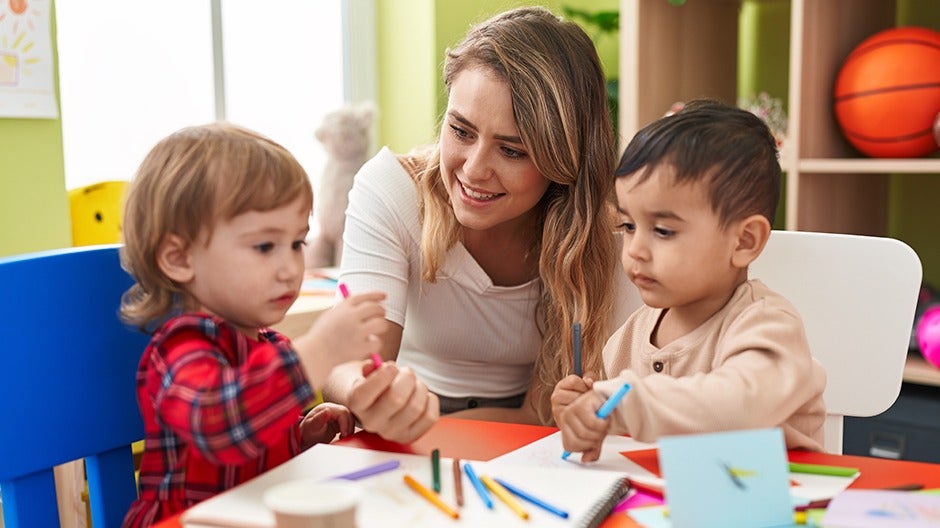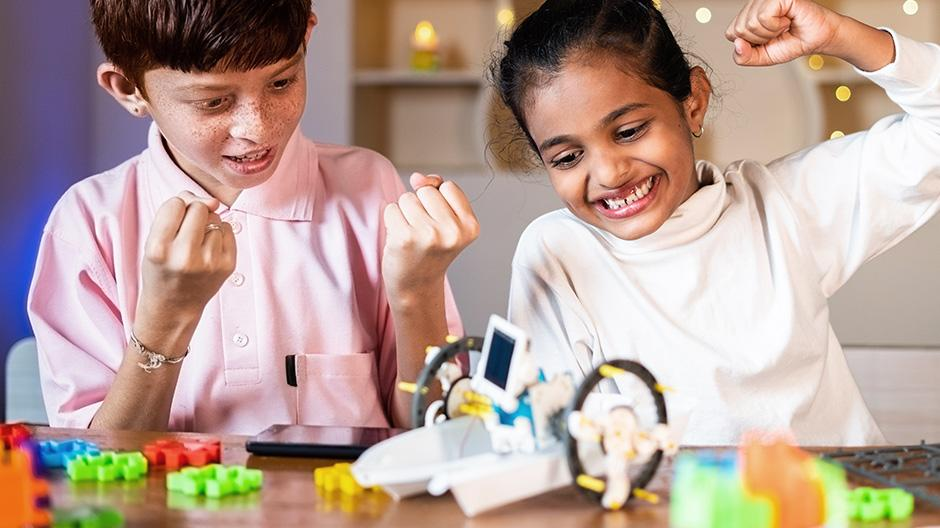1st grade reading is only the beginning of your child’s lifelong journey toward becoming an enriched, excited reader!
HOMER is here with the essential information you need to figure out how you can help your child succeed with their 1st grade reading adventures, as well as how to have fun with reading!
The Essential Goals Of 1st Grade Reading

Phonological Awareness
Your first-grader will begin developing their phonological awareness skills before they even reach kindergarten, but these are the sort of skills that will help them for the rest of their life.
Building phonological awareness continues in first grade and means that your child understands how to manipulate, distinguish, and play with sounds and words.
They’ll learn how to tell the difference between spoken words, syllables within words, and random sounds. They will begin to isolate syllables in words and blend syllables to make words. Finally, they’ll learn to isolate individual sounds within words and blend sounds to make words.
These skills also mean they’ll have the ability to read words, both old and familiar, using their knowledge of phonics and their decoding skills.
With their strong grasp on phonological awareness, they’ll also have a higher success rate with spelling new words that are phonetically regular. This means even if they’ve never seen the word “rim” or “blink,” they’ll likely be able to spell it correctly on their first attempt.
Print Concepts
Advancing their knowledge of print concepts means your child isn’t just leveling up their reading — they’re expanding what they know about the boundaries of reading and writing!
Your first-grader will move beyond homogenous letter writing (writing in only uppercase or lowercase letters). Now they understand basic rules for capitalization along with punctuation rules. Periods, exclamation marks, question marks — your child will learn them all!
They may also be able to reliably pinpoint the emotional context of a sentence based on the ending punctuation. They’ll know when a sentence is supposed to be informative, inquisitive, or exciting.
Additionally, your child will learn that when it comes to books, there are many places to go to figure out the “roadmap” of a story! They’ll know where to find information about the book — like its title — and where they can find the name of the author or illustrator.
They will understand that nonfiction books often have captions with extra facts and that some books have glossaries that can help them to understand the meaning of challenging words.
That’s not all! They’ll learn how to make predictions about a text based on its cover, title, or illustrations. Afterward, they’ll be able to compare and contrast their initial guess with what they actually read.
Although your child may be able to draw some conclusions about what they read, remember they’re still young. Their insights may only work at a surface level.
This is perfectly OK! Even asking basic questions about the text read will help reinforce the idea that it is important to think about what we read.

Phonics
Phonics may sound a lot like phonological awareness. The two are related but not identical!
While phonological awareness refers to a generalized awareness of sounds and how they work within words (and outside of them as broader sounds), phonics deals specifically with letter sounds.
Phonics involves linking letters and combinations of letters with specific sounds. Children with a strong foundation in phonics can correctly and consistently link alphabetic letters with associated sounds to decode unfamiliar words.
At the 1st-grade reading level, children are expected to use phonics to decode phonetically regular words.
They will learn how to read words with short vowels (like cap and cub), words that use a silent E to create long sounds (like cape and cube), words with beginning and ending blends (like skunk and twist), and words with consonant digraphs (like mash and ship).
Through phonics, your child will begin to understand how essential vowels are to word formation. No matter how you slice it, every English word has at least one vowel sound. In fact, every syllable has a vowel sound — and only one vowel sound!
They’ll use these skills to break apart longer words into smaller, more manageable syllables. As your child becomes more comfortable decoding words, they’ll be able to apply the emotional inflection of a sentence (usually conferred by punctuation) while reading words.
Fluency
Fluent reading doesn’t mean your child can read anything on the market. It simply means that they are developing the ability to read with acceptable speed, accuracy, and expression at their determined reading level.
While reading, first-graders will appropriately utilize context clues and illustrations to aid the fluency of their reading. They’ll be able to understand almost anything that appears on the page (as long as the book is in their reading level!)
Their reading will feature emotional expression and, when applicable, slower moments when they need to sound out new, grade-appropriate words. The next time they revisit the story, they should read the word a little bit smoother!
Comprehension
Your first-grader is starting to get a sense of how big the world around them really is (and how much bigger their imagination can be!).
This means that through reading and learning, they’ll gain a little bit more baseline knowledge of all sorts of subjects. This is what reading comprehension is all about!
Comprehension will help them remember what they’re reading as well as consider the goals of the text in front of them (is it for informing or entertaining?).
While reading, they’ll learn to identify words or phrases that suggest specific feelings, compare and contrast the experiences of different characters, and pinpoint the main character in the story.
They’ll be able to draw conclusions from these different sources of information and express opinions about what they uncover in the text. They may also begin to relate these thoughts and ideas to their own experiences.

Skills Needed To Master 1st Grade Reading
Before beginning 1st grade reading, your child will need to know some things to jump-start their new learning adventures.
Firm Grasp On Letters
Ideally, your child will come into first grade with a strong grasp of the alphabet!
They should be able to not only recognize letters but correctly pair letters with the sounds they make. They should be able to differentiate between uppercase and lowercase letters, as well.
Your child may already know how to spell or read a few consonant-vowel-consonant (CVC) words, too. If not, there’s no need to worry! This is a skill they’ll work on more as they go through first grade.
For now, focusing on your child’s letter and letter-sound practice will get them primed for 1st grade reading.
Ability To Pinpoint Evidence
While reading, your child will probably express opinions about a character or plot point of the story. By first grade, they may be able to explain what gives them those opinions — in other words, identify evidence in a text.
We encourage you to give your child an extra nudge in the right direction by asking how they know what they know. You may be surprised to hear what they say!
This also gives you a chance to double-check that your child knows a text can give them all the evidence they need to support their conclusions.
Using Words To Express Ideas
What better way to use all the new words your child is learning than by expressing themselves?
The best way to help your child learn to use words to express ideas — and, as a result, prepare them for first grade — is to read and talk to them. Doing both allows you to help your child develop not just a love of reading but a strong desire to be a reader.
Talking with children also enhances their receptive language (their ability to understand what is said to them) and their expressive language (their ability to express their ideas accurately and thoughtfully).
It’s simple but so effective: taking the time to read to and have real conversations with your child can help their reading development so much!
Master 1st Grade Reading With HOMER

The skills your child learns as a first-grader will help them on their reading journey for the rest of their life. Not only that, but there is so much fun and excitement waiting for them just beneath those colorful covers!
Getting the hang of the skills needed for 1st grade reading will take time, but with practice and patience, we know your child will get where they need to go!
And may they never forget that reading is one of the most exciting things they’ll ever learn how to do! It opens up a world of possibilities and imagination, all ready for their exploration anytime and anywhere.
We at HOMER hope that this guide has you feeling ready and relaxed about what your child will achieve during 1st grade reading lessons.
We’re always here to lend a helping hand in your child’s learning journey, especially through our Learn & Grow app. We want your child to feel like the whole world is at their fingertips, and with our personalized reading activities, it can be!












